- Author Matthew Elmers [email protected].
- Public 2023-12-16 21:49.
- Last modified 2025-01-24 09:17.

Art should always be accompanied by graceful lightness and beautiful purity of colors, and the work as a whole should be brought to perfection not with the tension of cruel passion, so that people looking at it do not have to suffer from passions, which, as you can see, the artist was overwhelmed, but so that they rejoice in the happiness of the one whose hand has been granted by heaven such skill, thanks to which things get their completion, it is true, with science and labor, but without any tension, and so much so that where they are placed, they do not seem to the viewer dead, but alive and truthful. Let them beware of laxity and strive to ensure that every object they depict seems not written, but alive and protruding from the picture. Such is true, well-founded drawing and true ingenuity, which is recognized by those who have invested it in paintings that have received high recognition and appreciation.
Giorgio Vasari. Biographies of famous painters. Giotto, Botticelli and others
Art and history. How did contemporaries assess the work of the great maestro? Leonardo's biographer Giorgio Vasari (and future author of The Battle of Marciano) later wrote that the Senoria Commission recognized his work as "outstanding and accomplished with great skill because of the amazing observations he used in depicting this dump, for in this image people exhibit such the same rage, hatred and vindictiveness, like horses, of which two are intertwined with their front legs and fight with their teeth with no less ferocity than their riders fighting for the banner …"
This is not to say that Leonardo da Vinci thoughtlessly rushed to copy ancient technology. So - I read it, he liked it, and he repeated it. Leonardo also took precautions, tested this technology in advance and did everything exactly as described: first, a layer of plaster was applied, which was primed to achieve a hard, even surface; then a layer of resin was added on top of the primer, which was applied with sponges. The combination of these materials should have provided a suitable base for the application of oil paints. Leonardo wrote very quickly, using his scaffolding, but then the weather intervened. It started raining and it became very damp. As a result, the paints refused to dry and began to leak. Then Leonardo decided to dry the fresco with fire, and braziers were lit under the wall. However, if the upper sections of the fresco dried out even too quickly, the fresco below began to flow very strongly, and Leonardo had to give up. There have been many suggestions as to why his project failed in such a terrible way. Perhaps the master tried to get ahead of his younger rival and therefore decided to speed up the process, or poor-quality linseed oil was used, or the plaster was defective, to which the paint did not stick. But there is also an opinion that Leonardo did not pay attention to an important part of Pliny's instructions, which said: “Among the paints that require a dry chalk coating and refuse to adhere to a wet surface include purple, Indian, cerulean, miline, horny, appian, cerus. The wax is also colored with all these dyes, for encaustic painting; a process that does not allow painting on the walls …”And he just used purple paint, and even put it on an insufficiently dried surface on a rainy day.
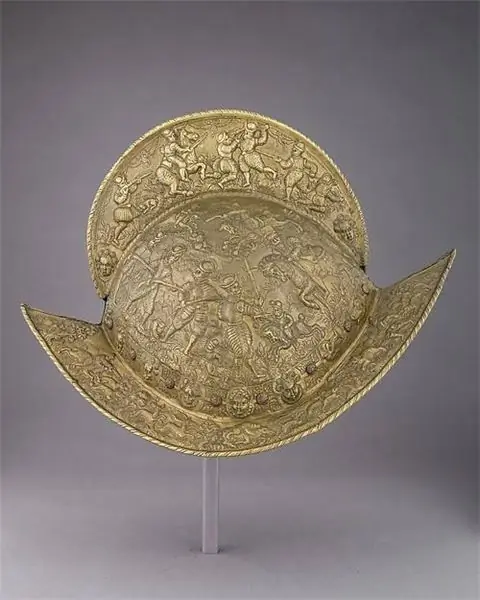
As a result, little remained of the fresco over the next few years. Rather, there are eight studies of its composition, three large studies of the heads depicted on it, its written description and several not very exact copies made by different artists at different times.
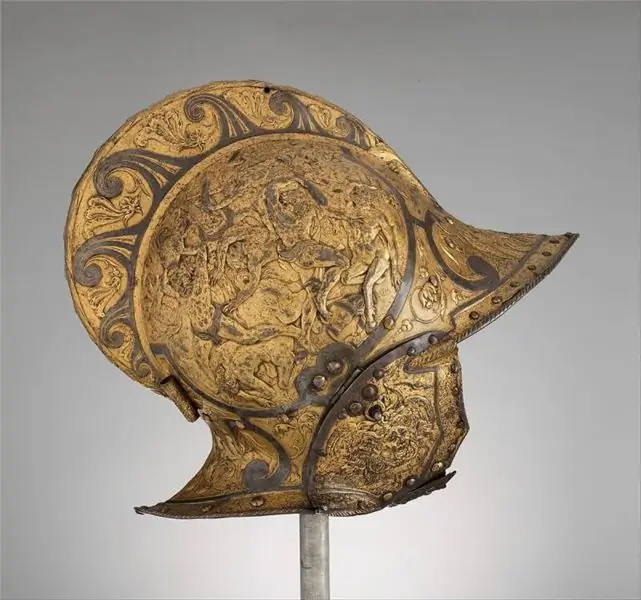
Around 1603, Rubens wrote a copy of The Battle of Anghiari, based on an engraving by Lorenzo Zacchia in 1558. It is believed that in it he achieved something that no other artist could convey before him, namely the feeling of strength characteristic of Leonardo's brush: confusion, rage and fury of the fighting. It is interesting that this picture is often written about both in books and on the Internet, that this is an original painting by Leonardo, which it certainly is not.
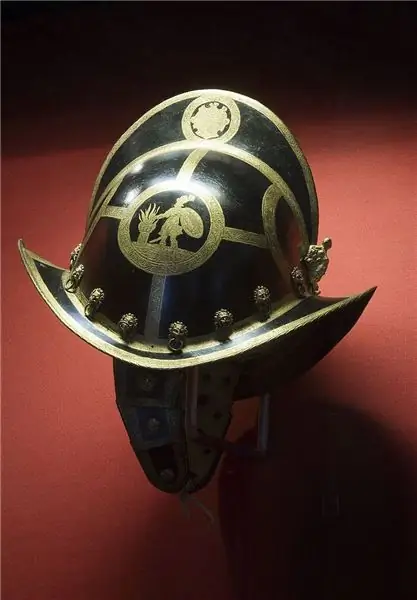
Interestingly, in accordance with the terms of the contract, Leonardo had to draw the actual battle, starting with the approach of the Milanese troops in a cloud of dust. Then he had to portray Saint Peter, who appeared to the commander of the papal troops, then the struggle for the bridge over the Tiber River, the defeat of the enemy and the burial of the dead. All this had to be shown in one picture (!), That is, it was necessary to depict the beginning, middle and end of the battle on one canvas! Interestingly, the author of the Battle of Grunwald, Jan Matejko, did approximately the same. But Leonardo would not be himself if, having agreed, he did not do everything his own way, and Senoria simply did not have the strength to argue with him.
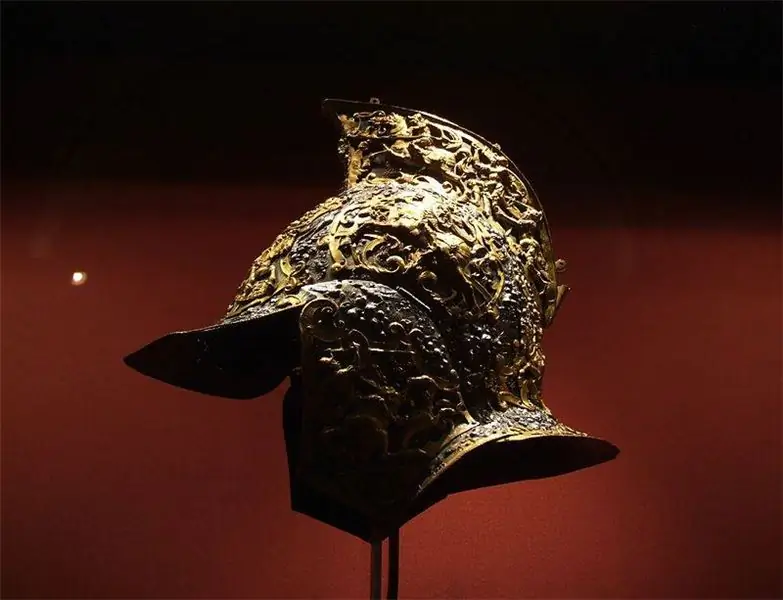
By agreement of 1503, he promised to complete the work by February 1505 or return all payments. Despite its incompleteness and lack of signs that it has made significant progress, payments continued beyond that time. The end result was a short letter about his work that was sent from Pierre Sauderini to Charles d'Amboise. It stated that "Da Vinci did not behave towards the Republic as he should, because he accepted a large sum of money and barely began the great work that he had to do."
It is interesting to note, however, that other paintings commissioned by different artists were not completed. Michelangelo began work on the fresco in 1504, but was recalled by Pope Julius II to Rome. All that remains of his work are copies of his cardboard, which depicts bathing soldiers.
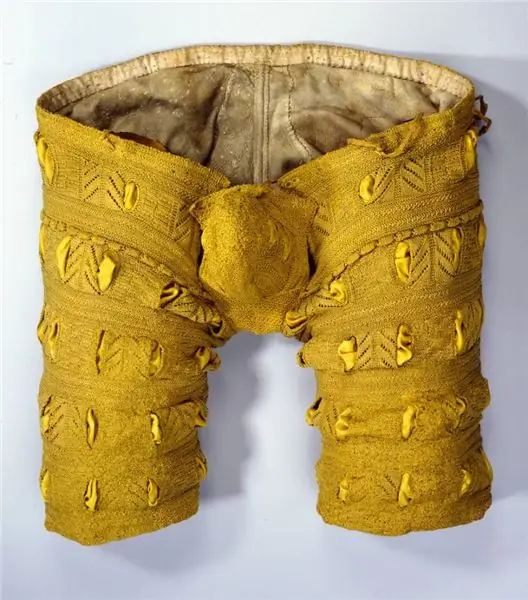
And then Giorgio Vasari painted his "Battle of Marciano" over what was believed to be Leonardo's frescoes.
In 1976, she was examined by ultrasound, but nothing was found. However, the Italian art critic Maurizio Seracini, who conducted this study, felt that Vasari simply could not ruin the work of Leonardo, whom he admired and literally idolized. New research has shown that there is some space behind the wall on which Vasari's fresco is painted. Finally, on March 12, 2012, Maurizio Seracini announced that there is another surface behind the wall with his fresco. Six holes were drilled in the wall, probes were launched into them, samples were taken, and among the samples they found black and beige paints, as well as red lacquer composition characteristic of the early 16th century. However, no one wants to destroy the wall, although everyone wants to find a painting by Leonardo. There are "movements" and "for" and "against" the continuation of the work. Pickets and demonstrations are held. Nobody knows what will happen next.
This is the story of these two paintings. Well, now you may well be able to tackle them closely. Let's look at the painting by Rubens and see that, apart from perhaps even the flagstaff on it, in fact, is the shaft of a knight's spear. That is, it would be simply inconvenient to use it as a pole for a banner. For some reason, all the horsemen are depicted barefoot and are sitting on horseback without stirrups. All of the riders are wearing armor, but extremely strange. The rider on the left is wearing some absolutely fantastic armor in the "nautical style", but with a ram's head on his chest. The armor of a rider in a red turban is more acceptable, moreover, it is known that it was at this time that such or similar turbans were worn in the Swiss cavalry, and not only among them. The second rider on the right seems to have a morion helmet, but such helmets were usually not worn by riders. It was a helmet of foot spearmen, but not cavalry!
The horses have saddles, but no harness or bridles, and how, then, do the riders control them?
It is interesting that all three riders are armed with swords of the felchen type (or falchion in Russian), but at the same time the rider on the right also has a classic sword. Moreover, although they often drew such felchens, they have not reached us in a single copy. All the copies that have come down, firstly, are few in number, and secondly, they do not look like those depicted by Leonardo at all! That is, it is possible that they existed. Existed as a fashion for everything Turkish at the beginning of the Turkish conquests in Europe. And maybe, again, maybe Leonardo armed his “heroes” with them in order to once again emphasize the “brutal nature” of the war, that here, they say, there is no place for Christian mercy, here everything is as wild as that of the Turks.
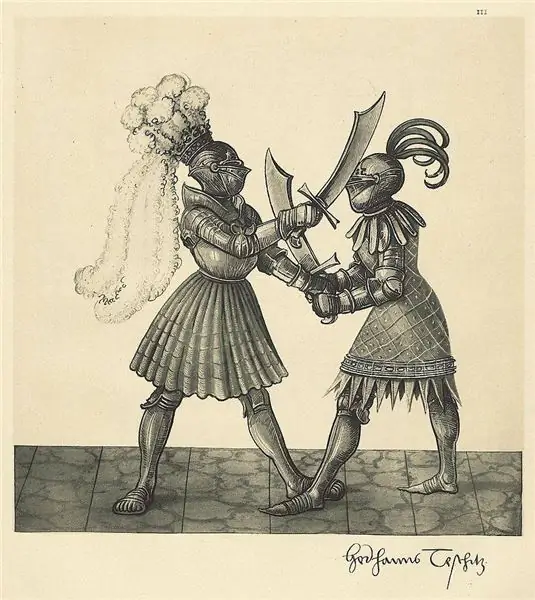
Of course, I personally would be much more interesting if the great Leonardo decided to combine his talent for depicting the muscular flesh of people and horses with the realistic ability to draw weapons and armor of that era, rather than fantasizing in such a wild and exotic way. That would be a picture for posterity! For example, one rider is wearing armor from Helschmid, the other is from Anton Peffenhauser, Valentin Siebenbuergeran or Konrad Lochner, and the third is something purely Milanese from the Negroli family … But what is not, that is not. Only one skill in conveying emotions overwhelming people and horses, and zero historical information - this is his picture!

Giorgio Vasari in his fresco was nevertheless somewhat closer to realism. However, we will start by looking at the extreme horseman on the left. Both he and his horse are a clear redrawing of the rider from Leonardo's fresco, well, the one on the right. Of course, she is only similar, but very similar. And he also depicted felchen on the model of Leonard's, just as he painted a completely mythological shield for a warrior in the very center. Maybe this is an allegory, and in it is the whole meaning of this fresco, that is, there is not only a fantastic sword, but also an equally fantastic shield? At the same time, we see here quite realistic men at arms on horseback with scarves over their shoulders. We see two arquebusiers and terrible fights of warriors lying on the ground, one of whom stabs his opponent with a dagger in his mouth, while at the same time he stabs his dagger into his thigh. And again, this is a fairly recognizable scene from Leonardo's painting. That is, it turns out that the student followed the tradition of the teacher, and what he did not leave behind was added by him, Giorgio Vasari? Be that as it may, but this we will never know now!






